


When it comes to cleaning, bleach is a go-to product for many people. It’s effective at killing germs and removing stains, making it a popular choice for disinfecting surfaces and brightening laundry. However, mixing bleach with certain other cleaning products can be dangerous and even deadly. It’s important to know which cleaners are safe to mix with bleach and which ones should never be combined. Here, we’ll explore some do’s and don’ts when it comes to mixing bleach with other cleaners.
Do: Mix bleach with water.
Don’t: Mix bleach with ammonia.
Bleach diluted with water is a safe mixture for cleaning and disinfecting surfaces. It’s important to always follow the instructions on the bleach label and properly dilute bleach before use. This ensures that you’re using bleach in a safe and effective manner.
On the other hand, mixing bleach with ammonia can be extremely hazardous. The combination releases toxic fumes that can cause respiratory problems, eye irritation, and even death. Therefore, it’s vital to never mix bleach with ammonia or any products containing ammonia.
“Mixing bleach with ammonia can cause a chemical reaction that releases toxic fumes. This can lead to serious health consequences and should be avoided at all costs.”
Understanding the Compatibility of Cleaners with Bleach
Bleach is a commonly used cleaning agent that is highly effective in killing germs and removing stains. However, it is important to note that bleach should never be mixed with certain cleaners, as doing so can result in the release of toxic fumes or other dangerous chemical reactions. Understanding which cleaners are safe to mix with bleach is essential to ensure your safety and protect your health.
Safe Cleaners to Mix with Bleach
There are some cleaners that can be safely mixed with bleach without causing any adverse reactions. These include:
- Water: Adding water to bleach helps dilute its concentration and reduces its potency. This is especially useful when using bleach for tasks such as laundry or general cleaning.
- Dish soap: Dish soap can be combined with bleach to create an effective cleaning solution for removing tough stains or sanitizing surfaces.
- Ammonia-based cleaners: Ammonia can be mixed with bleach to create a powerful cleaning solution. However, it is important to use this mixture in a well-ventilated area to avoid inhaling toxic fumes.
Dangerous Cleaners to Avoid Mixing with Bleach
There are certain cleaners that should never be mixed with bleach due to the potential for hazardous chemical reactions. These include:
- Vinegar: Mixing bleach with vinegar can result in the release of chlorine gas, which can cause respiratory problems and other health issues.
- Ammonia: Combining bleach with ammonia produces chloramine gas, which can cause severe lung damage and even death.
- Rubbing alcohol: Mixing bleach with rubbing alcohol can create chloroform, a toxic substance that can have serious health effects when inhaled or exposed to the skin.
- Hydrogen peroxide: Bleach should not be mixed with hydrogen peroxide, as this can form a highly reactive chemical called peracetic acid, which is corrosive and can cause respiratory problems.
Key Points to Remember

- Mixing bleach with certain cleaners can result in the release of toxic fumes or other dangerous chemical reactions.
- Safe cleaners to mix with bleach include water, dish soap, and ammonia-based cleaners.
- Dangerous cleaners to avoid mixing with bleach include vinegar, ammonia, rubbing alcohol, and hydrogen peroxide.
- Always read and follow the instructions on cleaning products to ensure safe usage.
- When mixing bleach with another cleaner, do so in a well-ventilated area and wear appropriate protective gear, such as gloves and a mask.
- If you accidentally mix bleach with a dangerous cleaner or inhale toxic fumes, seek immediate medical attention.
By understanding the compatibility of cleaners with bleach, you can ensure safe and effective cleaning practices while minimizing the risk of harmful chemical reactions. Remember to always read labels, follow instructions, and prioritize your health and safety.
Importance of Mixing Cleaners Safely
Mixing different cleaners together can be dangerous and potentially harmful. It is important to understand which cleaners can be safely mixed with bleach to ensure the safety of yourself and your home.
Chemical Reactions
When certain cleaners are mixed together, chemical reactions can occur. These reactions may produce toxic gases or even explosions. Chlorine gas, for example, can be released when bleach is mixed with ammonia, vinegar, or acidic cleaners. Inhaling this gas can cause severe respiratory issues and can be fatal in high concentrations.
Potential Hazards
Mixing cleaners improperly can not only pose health risks but can also damage surfaces or materials. Some combinations of cleaners can cause stains, discoloration, or corrosion. For instance, mixing bleach with acids can corrode metal surfaces, while bleach and ammonia can create a toxic gas and damage fabrics.
Safety Guidelines
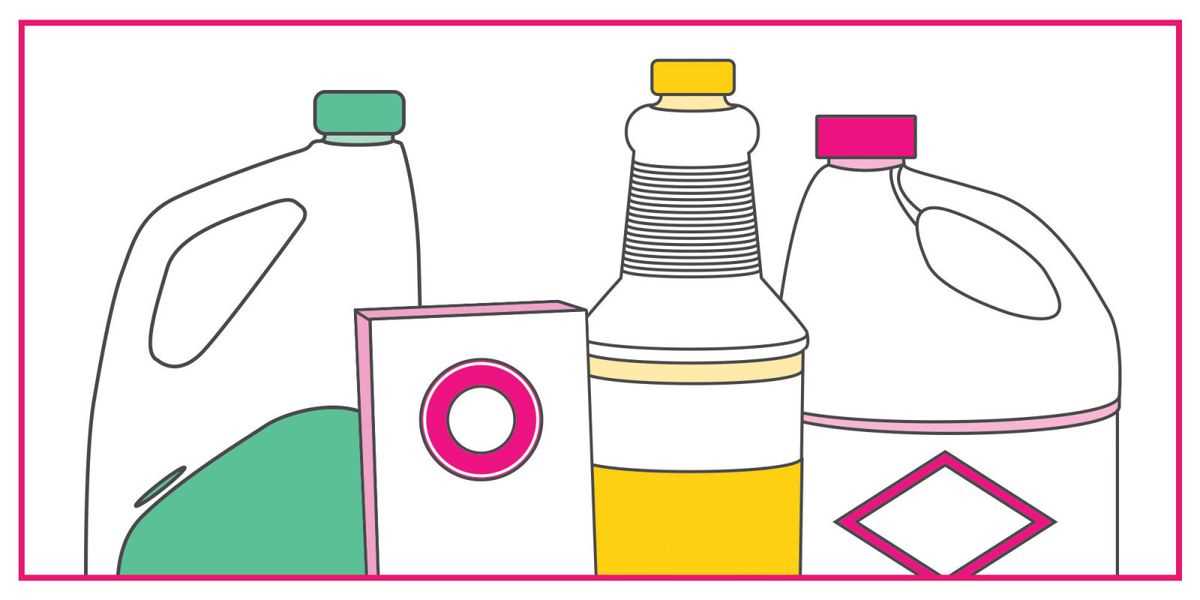
To ensure safety when mixing cleaners, it is important to follow these guidelines:
- Always read and follow the instructions on the cleaning product labels.
- Never mix bleach with ammonia, vinegar, or acidic cleaners.
- Avoid mixing bleach with any product that contains phosphoric, hydrochloric, or sulfuric acid.
- When combining cleaners, ensure proper ventilation by opening windows or using exhaust fans.
- Wear protective gloves and eyewear when handling cleaners.
- Store cleaners in their original containers and keep them out of reach of children.
Conclusion
Mixing cleaners can have serious consequences if not done safely. It is crucial to understand which cleaners can be mixed with bleach and to follow safety guidelines to protect yourself and your home. Proper knowledge and precautions will help prevent accidents, chemical reactions, and potential harm from occurring.
The Do’s
1. Water
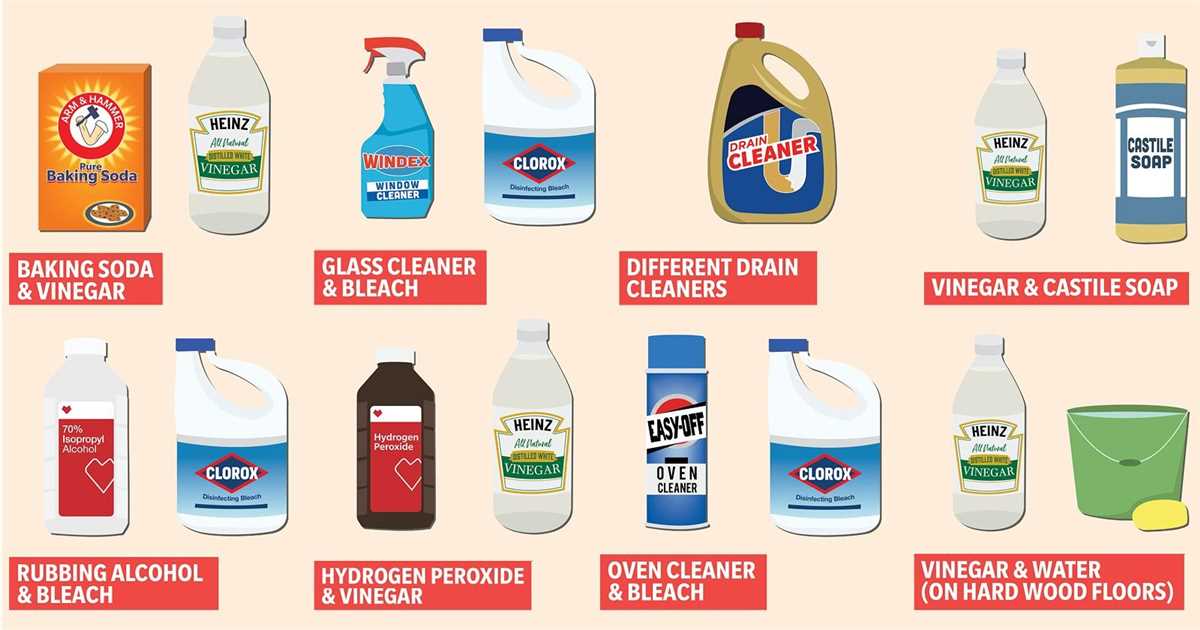
Diluting bleach with water is a safe and effective way to use it for cleaning purposes. This helps to reduce the concentration of bleach and minimize the risk of damaging surfaces or causing harm to yourself.
2. Dish soap
Mixing bleach with a small amount of dish soap can enhance its cleaning power. Dish soap can help break down grease and remove stains, making it a useful addition when cleaning kitchens or heavily soiled areas.
3. Borax
Borax is another cleaning agent that can be safely mixed with bleach. It is effective at removing tough stains and odors and can be used in laundry or as a general household cleaner.
4. Vinegar
When used in small amounts, vinegar can be mixed with bleach for cleaning purposes. Vinegar is a versatile cleaner that can help remove stains and disinfect surfaces.
5. Hydrogen peroxide
Hydrogen peroxide is a mild bleach alternative that can be used alongside bleach for increased cleaning power. However, it is important to use caution and follow proper safety guidelines when mixing these two substances.
6. Rubbing alcohol
Rubbing alcohol can be mixed with bleach for cleaning purposes, but it is important to use it sparingly. Mixing too much rubbing alcohol with bleach can create toxic gases, so it is crucial to follow proper safety precautions.
7. Lemon juice
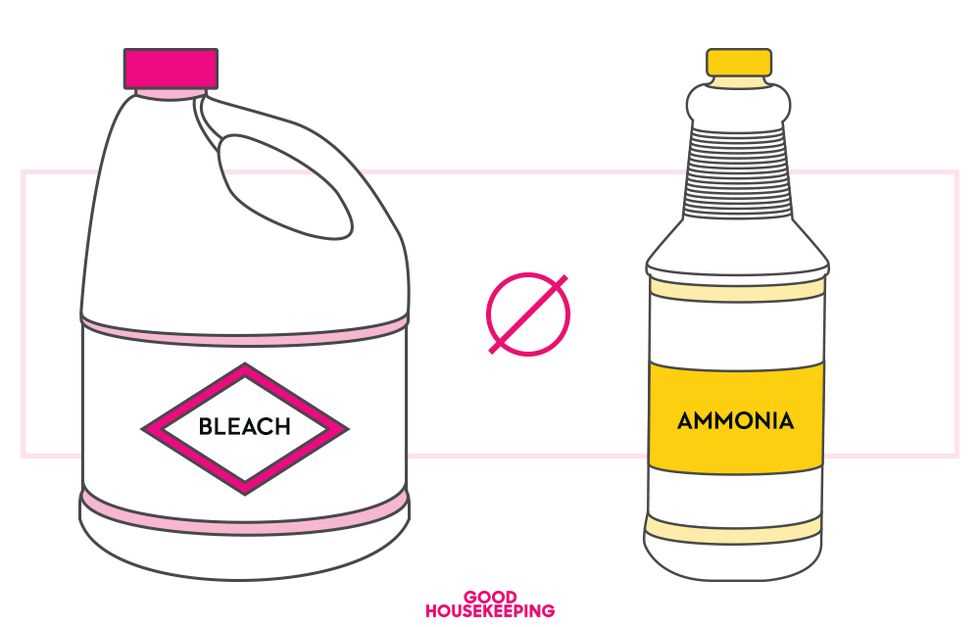
Lemon juice can be mixed with bleach for cleaning purposes. It can help remove stains, disinfect surfaces, and leave a fresh scent. However, it is important to use lemon juice sparingly and properly ventilate the area.
8. Baking soda
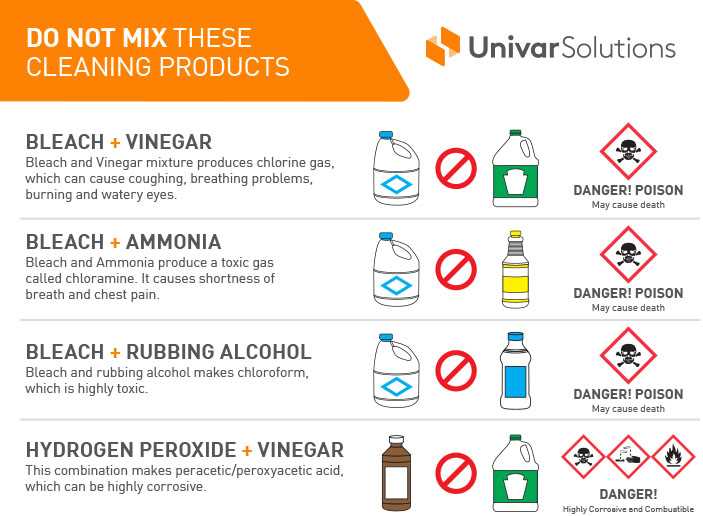
Baking soda is a safe and natural cleaner that can be mixed with bleach for enhanced cleaning power. It can help remove stains, neutralize odors, and act as a gentle abrasive when cleaning surfaces.
9. Essential oils
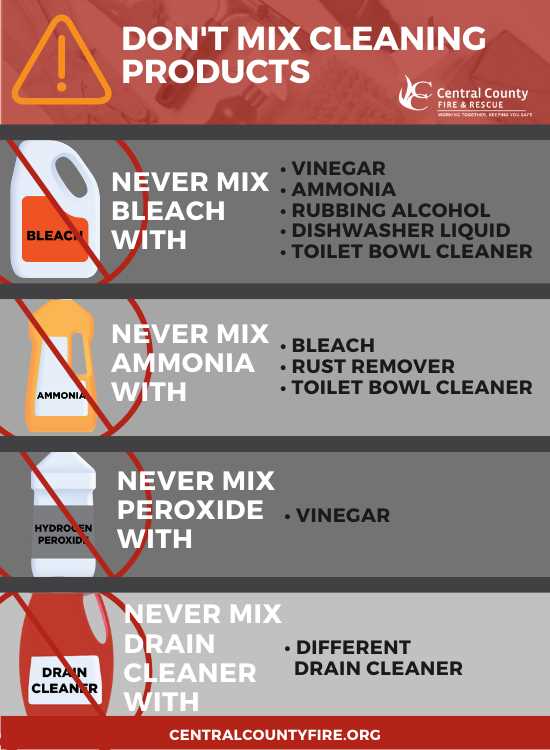
Adding a few drops of essential oils, such as lavender or tea tree oil, to bleach can help mask its strong scent and leave a pleasant fragrance. However, it is important to use essential oils sparingly and ensure proper ventilation.
10. Follow safety guidelines
It is crucial to always follow safety guidelines when mixing cleaners with bleach. These guidelines include wearing protective gloves and clothing, working in a well-ventilated area, and avoiding mixing bleach with ammonia or acidic cleaners.
| Do | Don’t |
|---|---|
| Wear protective gloves and clothing | Mix bleach with ammonia |
| Work in a well-ventilated area | Mix bleach with acidic cleaners |
| Dilute bleach with water | Mix bleach with hydrogen peroxide in large amounts |
| Follow the manufacturer’s instructions | Mix rubbing alcohol with bleach in excessive amounts |
| Use small amounts of other cleaners | Use essential oils in large quantities |
Safe Cleaners to Mix with Bleach
When using bleach as a cleaning agent, it is important to be cautious about what other cleaners you mix with it. Mixing certain cleaners with bleach can produce toxic fumes or harmful reactions. However, there are some cleaners that are safe to mix with bleach, as they can enhance its cleaning power or help with specific tasks. Here are some safe cleaners to mix with bleach:
1. Water
Water is a safe and commonly used diluting agent for bleach. When bleach is mixed with water, it can effectively clean and disinfect surfaces.
2. Soap and Detergent
Soap and detergent can be safely mixed with bleach to enhance its cleaning abilities. They can help break down dirt, grease, and grime, making it easier for the bleach to disinfect the surface.
3. Vinegar
Vinegar is another safe cleaner that can be mixed with bleach. It can help remove stains and odors, and when mixed with bleach, it can enhance the cleaning power of both substances.
4. Ammonia
While ammonia is generally not recommended to be mixed with bleach due to the potential for toxic fumes, it can be used in a diluted form in combination with bleach. However, it is crucial to follow proper safety precautions, such as ensuring proper ventilation and not mixing large amounts of the two cleaners.
5. Baking Soda
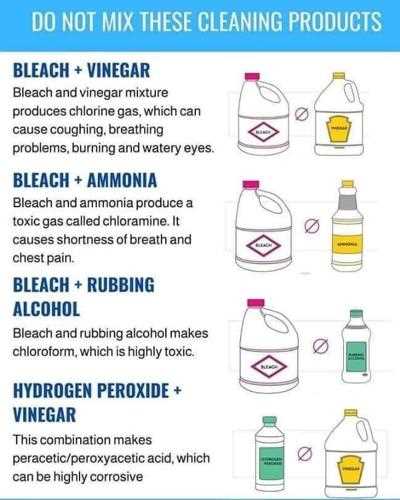
Baking soda is a safe cleaner that can be mixed with bleach to create a powerful cleaning paste. This paste can be used on surfaces like sinks, tubs, and countertops to remove tough stains.
6. Hydrogen Peroxide
Hydrogen peroxide can be safely mixed with bleach to create a cleaning solution that is effective against tough stains and mold. However, it is important to use hydrogen peroxide in a diluted form and to follow the proper safety precautions.
Remember, it is crucial to read and follow the instructions on the labels of cleaning products, including bleach, to ensure safe and effective use. When mixing cleaners, always work in a well-ventilated area and avoid mixing large quantities of different cleaners together.
Proper Dilution Ratios and Instructions
When it comes to mixing cleaners with bleach, it is crucial to use the proper dilution ratios to ensure safety and effectiveness. Using the wrong ratios can result in toxic fumes or ineffective cleaning.
Bleach and Water Dilution:
The most common cleaner mixed with bleach is water. Diluting bleach with water is necessary to reduce its potency and avoid damaging surfaces. The dilution ratio for bleach and water depends on the intended use:
- For general cleaning and disinfecting, mix 1 cup of bleach with 1 gallon of water.
- For sanitizing dishes and utensils, mix 1 tablespoon of bleach with 1 gallon of water.
- For laundry, use 1 cup of bleach per load, following the instructions on the bleach bottle or detergent packaging.
Other Cleaners:
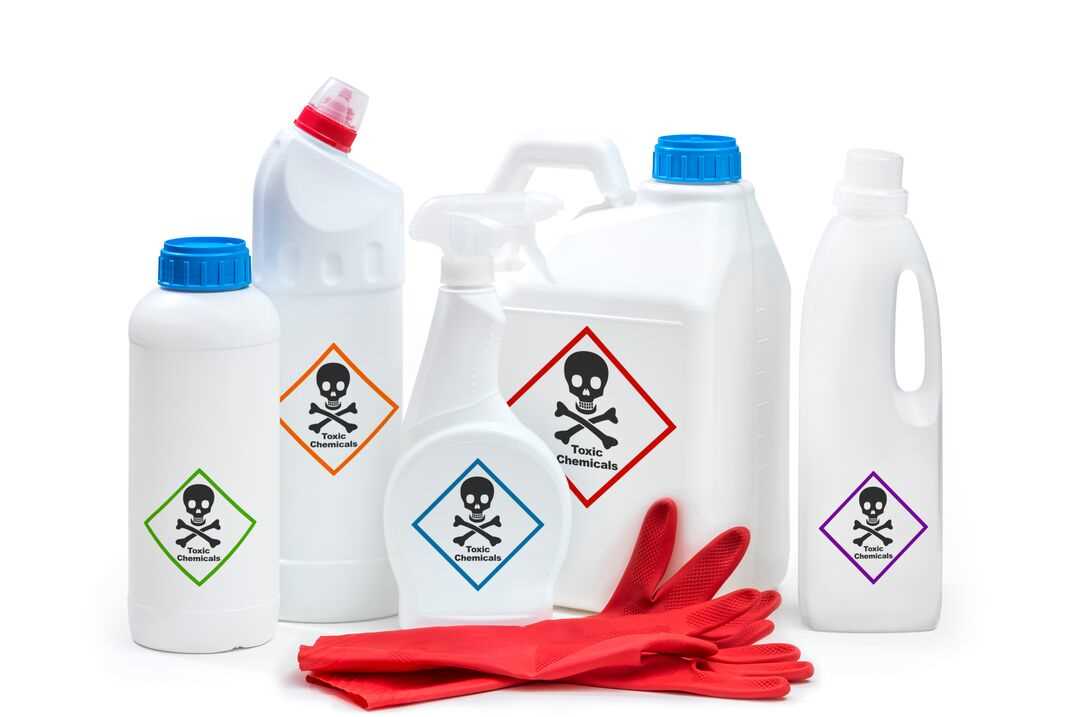
When considering mixing bleach with other cleaners, it is important to read the labels and follow the manufacturer’s instructions. Some cleaners may not be safe to mix with bleach due to chemical reactions that can occur. However, there are a few cleaners that can be safely mixed with bleach:
- Dish Soap: A small amount of dish soap can be added to a bleach solution for extra cleaning power. Use 1 teaspoon of dish soap for every gallon of bleach and water solution.
- Ammonia: Ammonia can be mixed with bleach for certain cleaning purposes, such as removing stains or disinfecting. However, extreme caution should be taken as the combination can produce toxic fumes. Only mix bleach and ammonia in a well-ventilated area and never mix them directly together. Instead, add 1 cup of ammonia to 1 gallon of water, then add a small amount of bleach to the solution.
Important Instructions:
When mixing cleaners with bleach, always follow these important instructions:
- Read and follow the instructions on the bleach bottle and cleaner labels.
- Wear protective gloves and ventilate the area properly.
- Never mix bleach with cleaners containing ammonia, vinegar, or other acids.
- Do not mix bleach with any cleaner that contains bleach itself.
- Always dilute bleach with water or another recommended diluent.
- Label any mixture with the ingredients and dilution ratios used.
Following these proper dilution ratios and instructions will help ensure the safe and effective use of bleach and other cleaners.
The Don’ts
- Don’t mix bleach with ammonia-based cleaners: Mixing bleach with ammonia-based cleaners such as glass or window cleaners, toilet bowl cleaners, or multi-purpose cleaners can produce toxic gases such as chloramine and ammonia vapors. These gases can cause respiratory problems, eye irritation, and other health issues.
- Don’t mix bleach with acids: Mixing bleach with acid-based cleaning products, such as vinegar or lemon juice, can result in the release of chlorine gas. Chlorine gas can cause coughing, breathing difficulties, chest pain, and even lung damage. It is important to avoid combining bleach with any acid-based solutions.
- Don’t mix bleach with hydrogen peroxide: Although hydrogen peroxide is sometimes used as a cleaner on its own, it should not be mixed with bleach. The combination of bleach and hydrogen peroxide can create a harmful chemical reaction that produces oxygen gas and can lead to an explosion.
- Don’t mix bleach with rubbing alcohol: Combining bleach with rubbing alcohol can produce chloroform and hydrochloric acid, both of which can be harmful when inhaled or exposed to the skin. This mixture should be avoided at all costs.
- Don’t mix bleach with any other cleaning product unless specifically recommended: It is generally best to avoid mixing bleach with any other cleaning product unless specifically instructed to do so by the manufacturer. Mixing bleach with other cleaners can potentially create toxic fumes or other hazardous reactions. It is always recommended to read and follow the instructions on the product labels.
Remember, bleach is a powerful disinfectant and cleaner, but it should be used with caution. Mixing bleach with the wrong products can be dangerous and even life-threatening. It is essential to practice safety precautions and read product labels to avoid any harmful chemical reactions.
Unsafe Cleaners to Avoid Mixing with Bleach
Mixing certain cleaners with bleach can create dangerous chemical reactions that can release toxic fumes or cause other harmful effects. To ensure your safety, it’s important to avoid mixing bleach with the following cleaners:
- Ammonia: Mixing bleach with ammonia can produce toxic chloramine gas, which can cause respiratory distress and other health problems. Do not mix bleach with any cleaner containing ammonia, such as glass or oven cleaners.
- Vinegar: Although vinegar is often used as a natural cleaner, it should not be mixed with bleach. The mixture can create chlorine gas, which can be extremely harmful when inhaled. Avoid mixing bleach with any cleaner that contains vinegar.
- Acidic Cleaners: Acidic cleaners, such as toilet bowl cleaners or rust removers, should never be mixed with bleach. The combination can produce toxic chlorine gas and other hazardous byproducts. It’s important to read the labels and avoid mixing bleach with any cleaner that contains acids.
- Hydrogen Peroxide: While hydrogen peroxide is generally safe to use on its own, it should not be mixed with bleach. The combination can create a corrosive compound known as peracetic acid, which can cause eye, skin, and respiratory irritation. Avoid using hydrogen peroxide and bleach together.
Remember, it’s always best to follow the instructions on the cleaning products and avoid mixing bleach with any other cleaners unless explicitly stated as safe to do so. Proper ventilation should also be maintained when using bleach to reduce the risk of inhaling toxic fumes.
FAQ
Is it safe to mix bleach with vinegar?
No, it is not safe to mix bleach with vinegar. The combination of the two can create toxic chlorine gas, which can cause respiratory problems and other health issues.
Can I mix bleach with ammonia?
No, you should never mix bleach with ammonia. Combining these two substances can produce a dangerous gas called chloramine, which can cause breathing difficulties, chest pain, and even death.
What happens if I mix bleach with hydrogen peroxide?
Mixing bleach with hydrogen peroxide can create a chemical reaction that produces oxygen gas and water. While this can be used as a cleaning solution, it is essential to follow the proper guidelines and dilute the mixture appropriately.
Are there any cleaners that can be safely mixed with bleach?
While it is generally not recommended to mix bleach with other cleaners, there are some exceptions. For example, you can mix bleach with water to create a diluted bleach solution for disinfecting surfaces. However, it is crucial to follow the appropriate ratios and safety guidelines.
Can I mix bleach with dish soap?
No, it is not recommended to mix bleach with dish soap. Bleach contains sodium hypochlorite, which can react with certain chemicals present in dish soap, such as ammonia, and create toxic gases. It is best to keep these substances separate when cleaning.












